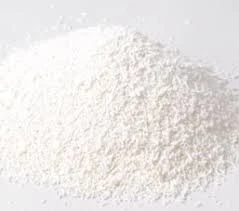
Exploring the Uses and Effects of MSG in Food Products and Cooking
Understanding MSG The Science Behind the Controversial Food Additive
Monosodium glutamate, commonly known as MSG, is a flavor enhancer that has been a staple in the culinary world for decades. While it is prized for its ability to amplify and deepen flavors, MSG has been surrounded by controversy and misconceptions that merit further exploration. This article delves into what MSG is, its uses, safety concerns, and its cultural significance.
What is MSG?
MSG is the sodium salt of glutamic acid, an amino acid that occurs naturally in various foods, including tomatoes, cheese, and mushrooms. It was first isolated in 1908 by Japanese chemist Kikunae Ikeda, who recognized its ability to mimic the savory taste found in foods. Since then, MSG has been widely used in both home cooking and commercial food production to enhance flavor profiles.
Uses of MSG
MSG is commonly used in a variety of products, including processed foods, snacks, sauces, and seasonings. Its ability to intensify umami, one of the five basic tastes alongside sweet, sour, bitter, and salty, makes it an ideal ingredient for enhancing the overall flavor of dishes. Restaurants often use MSG in broths, marinades, and stir-fries, particularly in Asian cuisine, where it has earned a reputation for improving taste without adding calories.
Safety Concerns and Controversies
food additive msg

Despite its widespread use, MSG has faced scrutiny over the years. Some individuals report experiencing a range of symptoms after consuming foods containing MSG, a phenomenon commonly referred to as Chinese Restaurant Syndrome. Symptoms may include headaches, flushing, sweating, and palpitations. However, extensive scientific research has largely failed to substantiate these claims. Studies conducted by organizations such as the U.S. Food and Drug Administration (FDA) and the World Health Organization (WHO) have found MSG to be safe for the general population when consumed in typical amounts.
The fear surrounding MSG can often be traced back to cultural bias and misinformation. The term “Chinese Restaurant Syndrome” itself suggests negative associations with Asian cuisine and has been criticized for perpetuating stereotypes. Furthermore, many foods naturally high in glutamate contribute to umami flavor, illustrating that the additive itself is not the issue but rather its perception in the media and individual experiences.
Cultural Significance
In cuisines around the world, MSG plays a vital role beyond taste enhancement. It reflects cultural openness to food innovation and the blending of flavors. Many chefs and home cooks embrace MSG as a tool to create complex and satisfying dishes. In fact, some of the most beloved recipes around the globe utilize umami-rich ingredients, whether that be through fermentation, slow cooking, or the addition of MSG.
In countries like Japan and parts of Southeast Asia, MSG is appreciated for its ability to elevate dishes without compromising health. Culinary traditions continue to evolve, and MSG remains a prominent figure in many kitchens, emphasizing that flavor enhancement is part of food culture.
Conclusion
Monosodium glutamate is a powerful flavor enhancer with a rich history and significant cultural importance. While it may be enveloped in myths and concerns, scientific evidence supports its safety and effectiveness in cooking. As we navigate a world of ever-evolving culinary practices, it’s crucial to base our understanding of MSG on facts rather than fears. Embracing MSG can lead to more flavorful meals, allowing cooks and consumers alike to enjoy the complexity and richness of umami in their dishes. Understanding MSG is not merely about asking whether it should be included in our foods, but about appreciating the role it plays in diverse culinary traditions worldwide.
-
Understanding Synthetic Rubber OptionsNewsApr.27,2025
-
Trichloroisocyanuric Acid: Essential for Clean and Safe WaterNewsApr.27,2025
-
Sodium Dichloroisocyanurate: Key to Safe Water TreatmentNewsApr.27,2025
-
Sodium Acid Pyrophosphate: Essential in Modern Food ProcessingNewsApr.27,2025
-
Essential Water Treatment ChemicalsNewsApr.27,2025
-
Denatured Alcohol and Its Industrial UsesNewsApr.27,2025
-
The Versatile Uses of Sodium BicarbonateNewsApr.24,2025
Hebei Tenger Chemical Technology Co., Ltd. focuses on the chemical industry and is committed to the export service of chemical raw materials.
-

view more DiethanolisopropanolamineIn the ever-growing field of chemical solutions, diethanolisopropanolamine (DEIPA) stands out as a versatile and important compound. Due to its unique chemical structure and properties, DEIPA is of interest to various industries including construction, personal care, and agriculture. -

view more TriisopropanolamineTriisopropanolamine (TIPA) alkanol amine substance, is a kind of alcohol amine compound with amino and alcohol hydroxyl, and because of its molecules contains both amino and hydroxyl. -

view more Tetramethyl Thiuram DisulfideTetramethyl thiuram disulfide, also known as TMTD, is a white to light-yellow powder with a distinct sulfur-like odor. It is soluble in organic solvents such as benzene, acetone, and ethyl acetate, making it highly versatile for use in different formulations. TMTD is known for its excellent vulcanization acceleration properties, which makes it a key ingredient in the production of rubber products. Additionally, it acts as an effective fungicide and bactericide, making it valuable in agricultural applications. Its high purity and stability ensure consistent performance, making it a preferred choice for manufacturers across various industries.











